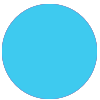Hi everyone,
I would like to write a Zap which responds to GET requests - normal browser stuff; it will be an IMG SRC type of a thing but the Zap needs to do things like call an API; get an image returned (this is a QR code automaton use case) and then return that image back in response to the GET request
The obvious reason for the Zap is that I want to obscure all the internal items such as API key, etc
I can’t do web hooks since that method only returns text in a JSON form with the outcome of the GET call. There must be something else that I am missing.
In summary; the Zap will accept the returned image from another external API and return that image as a response to the end point GET request - that’s what would hit the Zap
Any ideas will be appreciated
Thank you
Boyan





